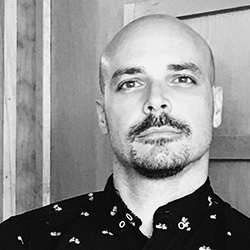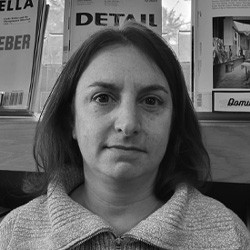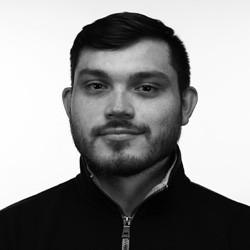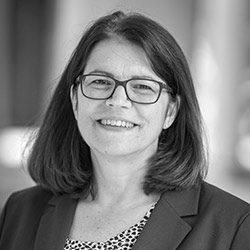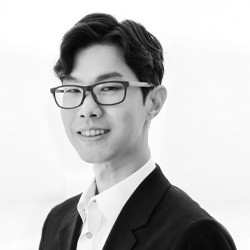To Build a Better World
In 2015, aspiring architect Alexander D’Amato jumped on an opportunity to move back to New York from Colorado to build and live in a tiny house on his family’s property. “I started [my architecture degree] at the University of Colorado, Denver,” he recalls. “When the time came to start studio classes, I had the chance to return to New York.” D’Amato looked at numerous architecture programs in the greater New York City area, but for him, NYIT was the perfect fit. He sat down with The Box to talk architecture, his career aspirations, and how he hopes to change the world.
You have a very interesting background. Can you tell us about it?
I have an associates degree in culinary arts from The Culinary Institute of America [and worked in the food and beverage industry for] 12 years as a sommelier, bar manager, cook, and anything else that needed doing. [I also worked in construction to] help fill wage gaps while working in the food and beverage industry.
So, why architecture?
I came to architecture through many different pathways, construction being one. When I lived out West, there were experiences that changed the way I viewed the environment and our part in it. It was also around this time that I learned of the great impact that buildings have on the environment, from carbon footprints of materials and construction methods to the wasteful way that we operate and occupy them.
Design and construction industries can affect the lives of everyone, while simultaneously staying on the cutting edge of technology…I came to a realization that I wanted to create, but also that I wanted to create something that would have a lasting influence on the lives of others. The equity, or lack of such, in our housing situations as well as our resource management with energy and food can all be answered through design problems. This is why a design degree is such a master key to so many doors—doors that can lead us to [making] lasting impacts on our communities and society as a whole—as long as we are thoughtful and continue to ask questions. Architecture embraces that type of thought; so does NYIT.
Did you find the transition difficult?
The two industries [food and beverage and architecture] are very similar in many ways. Both are service oriented, both provide a mix between necessity/luxury, and both are extremely susceptible to economic fluctuations. Architecture, however, offers stability assuming that if I earn more money during periods of plenty, then I can weather the times of drought. [I learned] this harsh lesson through years of living paycheck to paycheck, which made the decision to go back to school a necessary, but very difficult one. This is even more difficult when considering the age gap between my academic peers and myself and the stigma typically placed on older students.
What activities do you do outside of class?
I am the president of the NYIT-Long Island chapter of the American Institute of Architecture Students (AIAS) organization and through that the subsidiary Freedom By Design (FBD) group. I am also a member of the Equity and Diversity Task Force for the AIAS National Board. As a member of these groups I am involved in many different projects and programs that engage local high schools as well as local firms. The professional development of the entire student body is a big focus for us.
Outside of school, I am currently building a new place to live. My partner and I also go rock climbing and hiking, and the AIAS has many activities planned for the year, such as trips, firm tours, and professional development events in concert with Career Services.
You’ve also done internships, right?
I interned with a faculty member over the past two summers…I have had the chance to see many different stages of the process—from initial site visits, to drawings and documentation, to construction or demolition, to the finished design elements, like tile and trim. All of this has been a continuation of my own construction experience, but every project presents its own challenges. New York City has a unique building style because of the long term urban development history. This was undoubtedly the most interesting aspect of all of my internship experiences over the past two summers.
What’s next for your career?
I want my career to be about responsibility to the future. Through our designs, architects can offer a sustainable future to a more diverse population and [provide them with] equitable access to resources such as clean water, healthy food, safe and enriching spaces, and education. These resources [exist], we just need to answer the problem of how to use them and distribute them more effectively.
This interview has been edited and condensed.
